
Javier Baltodano bends down and breaks a piece of dried manure with his fingers. He looks at it carefully and his face lights up with some hope as he sees a tiny white speck growing like a spider’s web. “There they come, there they come,” he whispers as he points to what looks like filaments of fungus.
Less than a year ago, he started changing the diet of his cattle and using organic fertilizers on his farm’s soil. Doing this, he’s trying to recover microorganisms that decompose the manure in a short time and quickly return these nutrients to the soil.
The faster the manure decomposes in the pastures, the more certain he is that he’s getting closer to the cattle raising model he longs for. And that fungus in the manure is a sign that he is succeeding.
The survival and profitability of cattle ranching are walking a tightrope due to the high prices of supplies and the climate crisis.
The director of the Nicoya branch of the Ministry of Agriculture and Livestock (MAG for the Spanish abbreviation), Carlos Briceño, explained that the paradigm is changing for those who thought that environmental sustainability was for dreamers.
You can no longer buy a sack of compost. Before it was more romantic. Now it’s a necessity,” emphasized Briceño.
This isn’t a new problem in the province. Between 2014 and 2016, Guanacaste suffered the worst drought in the last eight decades. The government declared a drought emergency and budgeted more than ¢3,540 million (about $5.4 million) to deal with the crisis, which persists year after year almost a decade later.
Despite the difficult outlook, Briceño explains that it’s very difficult to suddenly change the culture of conventional cattle ranching in the province. “But there are already people who have been taking the step,” he said.
According to data from MAG, the cattle ranches that take measures to mitigate extreme droughts and rains increase profitability (the ability to generate income with their available resources) by 18%.
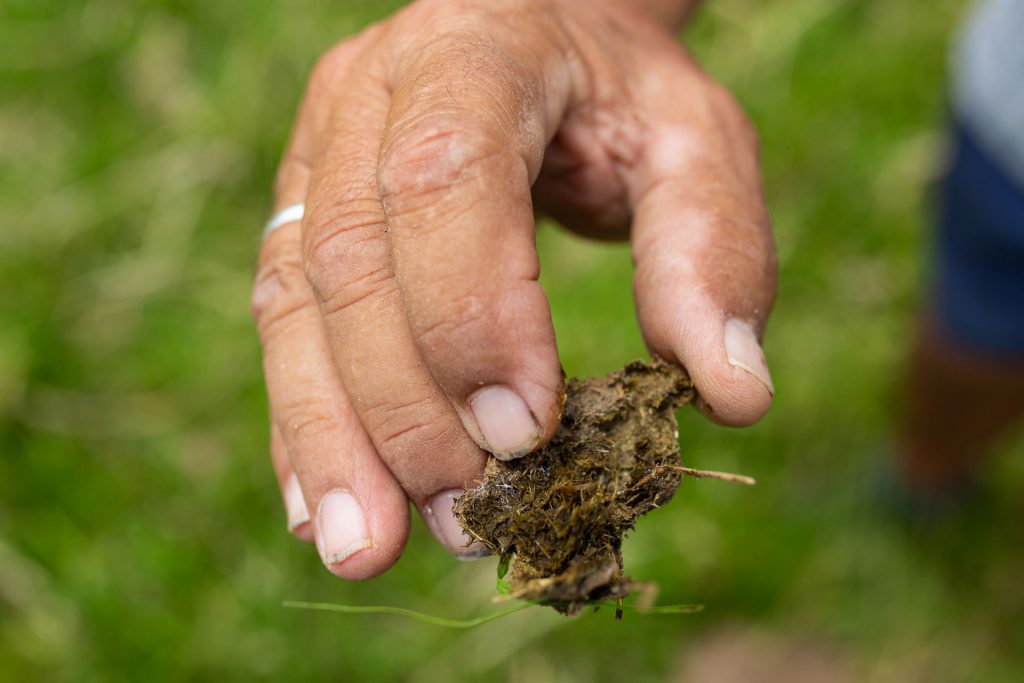
Some microorganisms begin to recover within the soil on Javier’s farm thanks to organic fertilizers.
Photo: Cesar ArroyoPhoto: César Arroyo
In the quest for alternatives to survive, Javier and other ranchers are betting on regenerative cattle raising, a method that imitates the dynamics of nature to recover pastures and soil microorganisms. At the same time, the model promises profitability and combats global warming.
“Caution: Deer Giving Birth”
Javier is a biologist and he worked as one all his life, until 12 years ago, when he took over El Encanto, his family farm. This land was bought by his grandfather, Aristides Baltodano, an educator and former legislator from Liberia (who also wrote one of the most beloved songs of our popular music).
The property is an hour and a half from downtown Liberia, heading towards La Cruz. A sign on the open gate warns “Caution: deer giving birth.” The same message is repeated multiple times within the property.
“The idea is to put hunters on alert. A no hunting sign isn’t going to stop them. On the other hand, with this sign, at least they can pay attention to not kill the females that are pregnant,” he explained.
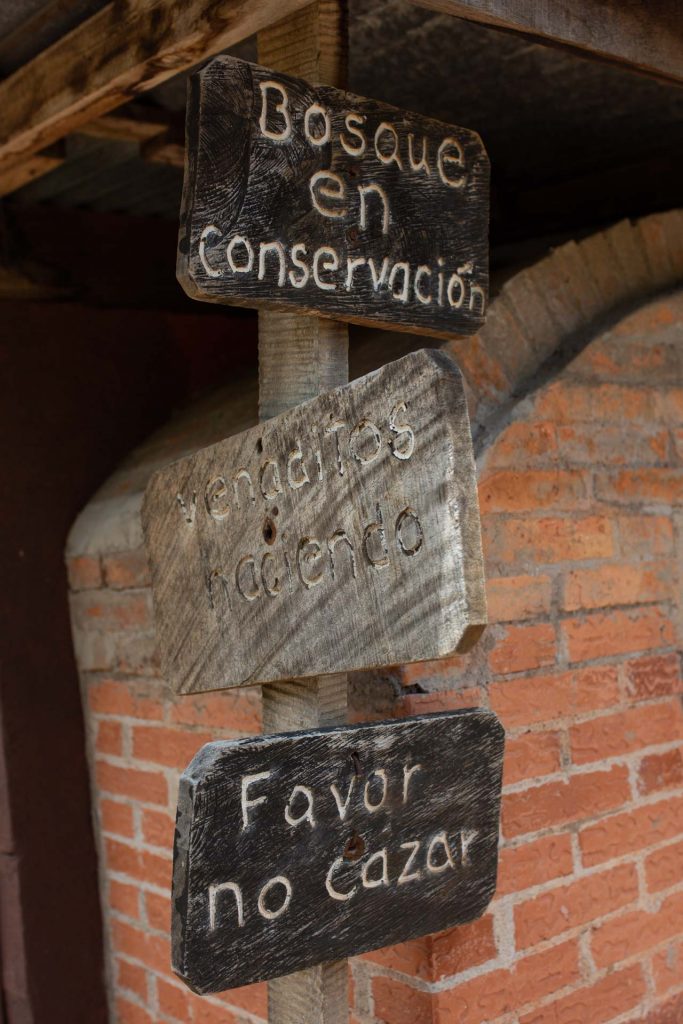
The El Encanto farm is on the slopes of the Cacao and Orosi volcanoes, which are part of the Guanacaste Conservation Area. For 30 years, its owners have allocated a portion of the land to recovering a forest area called Los Manantiales. Photo: Cesar ArroyoPhoto: César Arroyo
The farm’s gravel road crosses a patch of secondary forest that now ensures drinking water for them. This same area was a pasture that his family used for extensive cattle ranching until 30 years ago. Beyond that, like guardians, lie the Orosi and Cacao volcanoes.
Javier’s green and dense pastures begin to appear in the outskirts of the Guanacaste Conservation Area.
Less than a year ago, he made the decision to implement regenerative cattle raising, a movement promoted by ranchers themselves and technicians worldwide that seek to have more biodiverse soils, better water quality, healthier animals and, at the same time, a healthier ecosystem.
Fernanda Pia, master in leadership and sustainability, is director of Suelos Vivos (Living Soils), an initiative of the University for International Cooperation that trains those who seek alternatives such as regenerative cattle raising.
“If we don’t have fertile and living soils, we aren’t going to have healthy plants and therefore we won’t be able to have healthy animals,” said Pia.
Pia said that she considers herself a standard bearer for this model for several reasons. One is the possibility that the ranchers find what they need to produce in the environment itself and thus depend less and less on external supplies, such as balanced feed, anti-parasitic medication, herbicides and fertilizers.
We become dependent on these supplies because if the plants can’t take the nutrients from the soil, they need more and more nutrients that come from outside,” she added.
It goes beyond betting on the land. It also has to do with profitability. Implements are getting more and more expensive and recent events such as the war in Ukraine and the shipping container crisis have made prices shoot up even further around the world.
Even Regenerating the Soil
Javier puts the piece of dung back on the damp ground. The beetles he used to find in the manure recently disappeared because of the anti-parasitic medication he administered to his cattle in the past. But he’s trying to get them back by changing his cows’ diet and making his own fertilizers for the pastures.
He keeps everything in the farm’s galley. He has a tank full of phosphate rock fermentation called biol with which he fertilizes his pasture, as well as a fermentation of rice semolina with honey and microorganisms from the mountain that they take from the humic layer of the forests, in other words, where fungi, yeasts and microorganisms that decompose the leaves are concentrated.
That is fermented for a month and fed to the cows to enrich their digestive systems. Then their manure nourishes the pastures more.
That’s not the only way Javier plans to improve his pastures. Regenerative ranching has also helped him move his cattle around more efficiently and take better advantage of the space where the cows graze, thus avoiding another common error in ranching in Guanacaste: overgrazing.
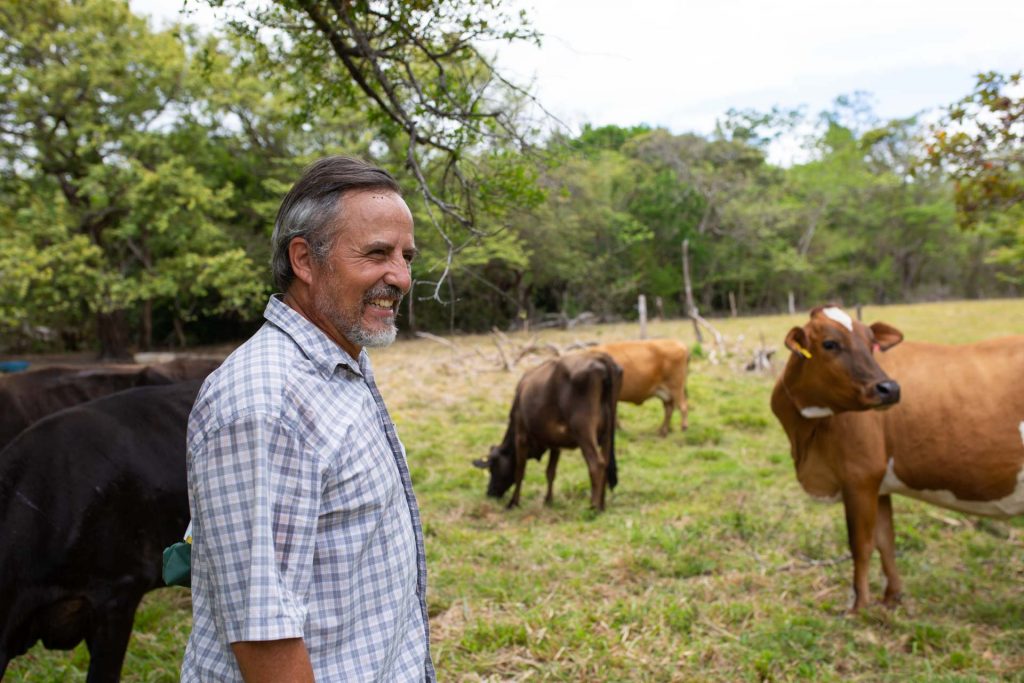
12 years ago, Javier Baltodano left his work as a biologist to take over the family farm. Photo: Cesar ArroyoPhoto: César Arroyo
The leader of Suelos Vivos, Fernanda Pia, explained that overgrazing occurs when cattle are allowed to remain for long periods of time in the same place.
The cows then eat only the youngest and most tender grass, and this weakens the roots until finally the grass dies. In other words, the grass never reaches its full potential.
At the same time, older plants will continue to grow in areas and become so stringy that cattle won’t eat them.
The other form of overgrazing occurs when ranchers move animals from one paddock to another before the grass reaches maturity.
Another practice that can be changed to avoid overgrazing is to have less animal groups and groups of more animals. Instead of keeping a few animals in one place for long periods, Pia explained that regenerative cattle raising attempts to simulate the ancient behavior of wild herds, like the large herds of herbivores that populated the African savannas or the pastures of North America, like the buffalo.
These groups grazed together and moved from one place to another due to the change of seasons and to escape their predators. With each migration, they left feces and urine that nourished and moistened the soil.
“So during all that time until they came back, the grass had already grown. That is what we want to do, but now it doesn’t happen naturally,” explained Pia. Now, that rotation must be directed by the rancher.
Javier uses the same principle on his farm. He moves the 80 cows through 33 pastures when he sees that they have already eaten the grass exhaustively and uniformly. This grazing with large herds, or groups of cattle, and long periods of rest for the grass have also caused leguminous plants that enrich their diet to grow and the cattle themselves become responsible for eliminating the “weeds.”
“We put all the cows together and that makes them voracious. They start eating what they don’t normally eat. That helped us a lot to dig into the problem of the tall, thick grass, the pitilla and the bramble,” explained Javier, referring to species that otherwise would have to be eliminated by chopping it down or with herbicides.
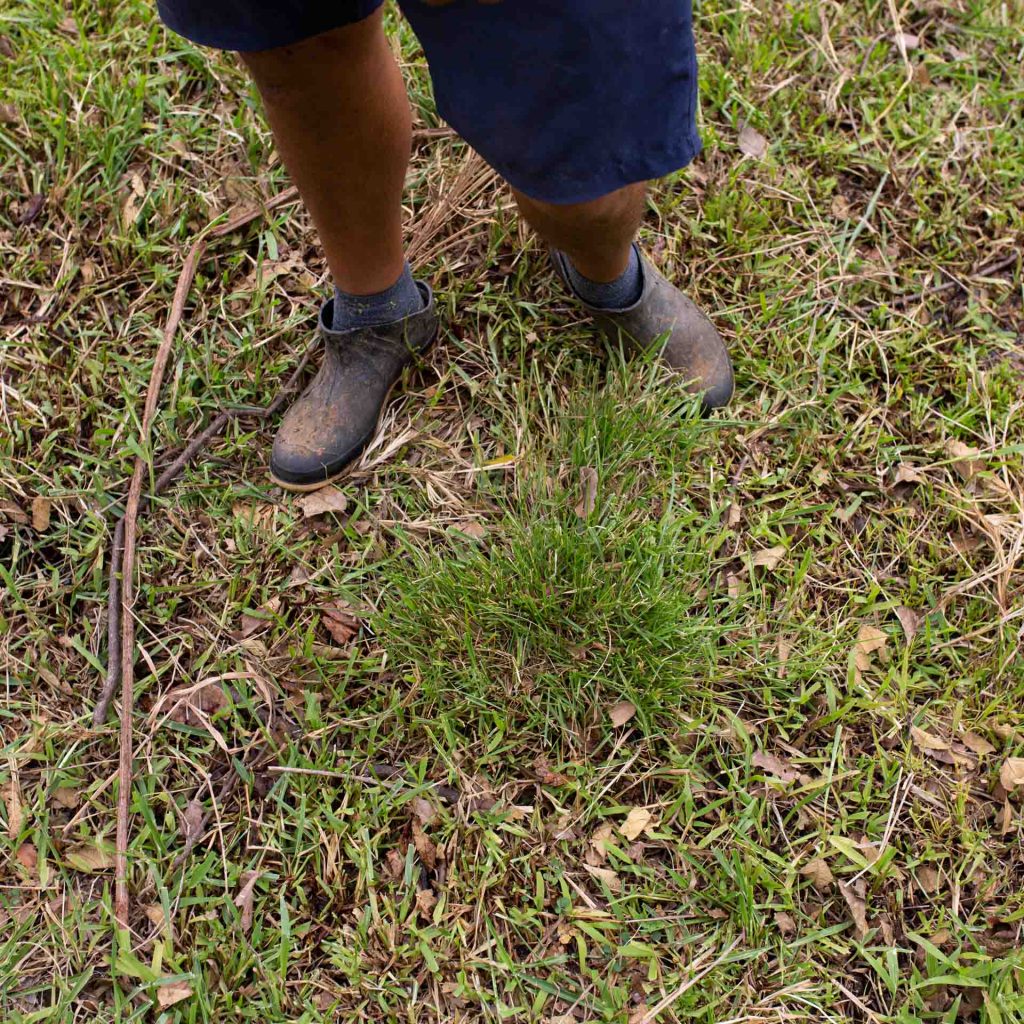
Through rational grazing, Javier has managed to get the cows to eat more than one type of grass known as pitilla, which they normally don’t touch. Photo: Cesar ArroyoPhoto: César Arroyo
Although he hasn’t yet done tests to verify what changes the farm has undergone, he said he has been able to see a greater diversity of plants, one of the objectives of regenerative cattle raising.
Javier knows how to be patient to assimilate the changes, but he knows that taking better care of the environment won’t automatically bring him profitability.
Checking How the Farms are Doing
Within regenerative cattle raising, there are several management and decision-making tools. One of them is a management methodology called holistic management.
Agronomist Marco Gomez uses this tool to give advice on regenerative production systems in livestock and agriculture.
Planning is done at several levels: grazing, the land, biological monitoring and finances, Gomez explained. The latter, financial planning, is very necessary for regions with long dry seasons like Guanacaste. In this way, ranchers can know in advance how much food they need to generate and if that amount of food can come from their own farms or if they need to buy it.
There are more people in Guanacaste who are applying holistic management on their farms, like Enrique Castegnaro. His pasture land is on the slope of another volcano, Miravalles.
Castegnaro participated in a forum last year in November to share his experience in regenerative cattle raising with other meat producers in Latin America. During that forum, he explained that when applying planning and observation to his cattle, he noticed that he had more grass than he was taking advantage of. That’s why he was able to increase his head of cattle by 50% in the middle of the dry season compared to the previous year.
Enrique is a civil engineer who has managed his family’s farm for 10 years. In his talk, he explained that he isn’t an expert but that in 2020, he began his path in regenerative cattle raising, when he trained as an associate educator at the Savory Institute.
Suelos Vivos, where Fernanda Pia works, is Savory’s regional connection in Costa Rican. The institution promotes training and implementation of holistic management worldwide through a network of regional connections. Another important point within this methodology is being able to measure results.
That’s why they have people who work as “verifiers.” Marco Gomez, is one of the Suelos Vivos verifiers, in addition to being associated with Agro Regenera, a group of ranchers and producers who decided to unite to train and share the results that they have achieved with this model.
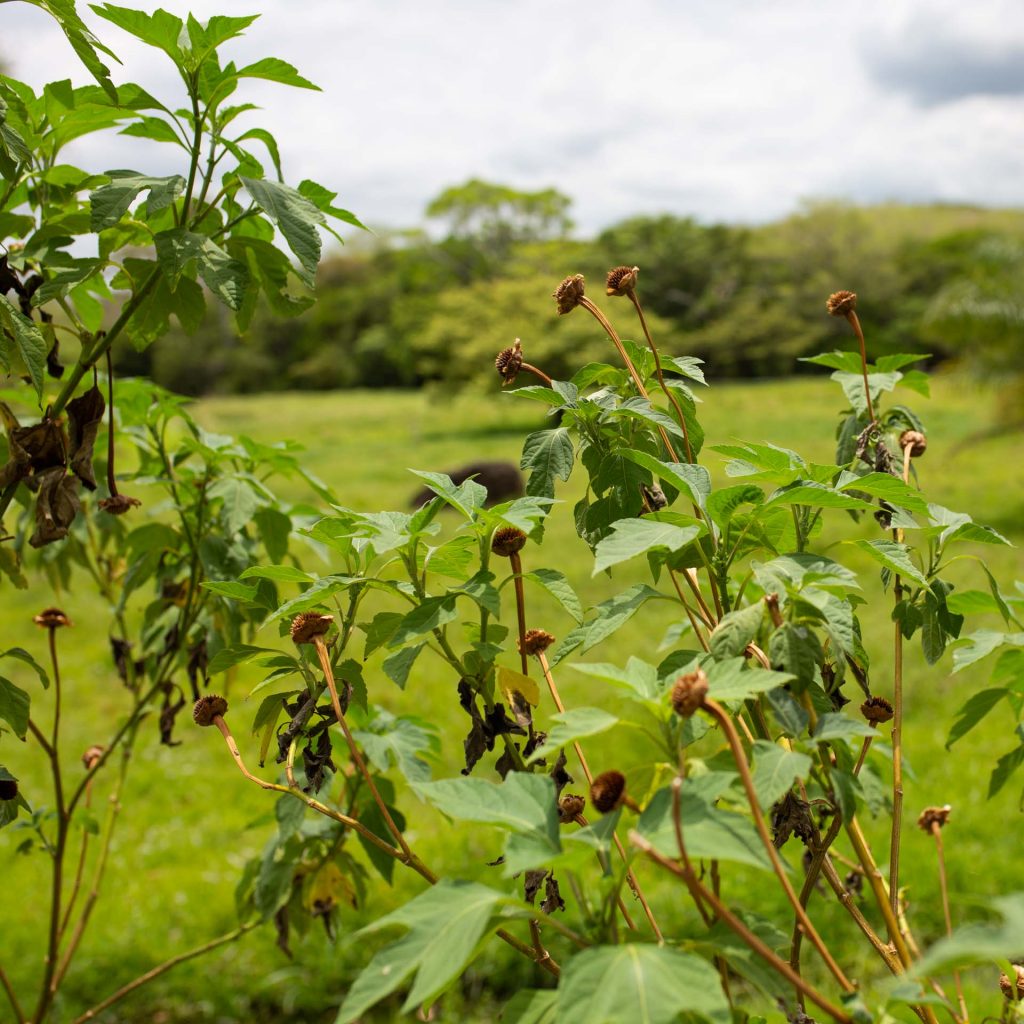
Javier planted Mexican sunflower (Tithonia diversifolia) around his pastures. Regenerative cattle raising looks for a diversity of grasses, legumes and herbs to create a much more balanced diet for animals. Photo: Cesar ArroyoPhoto: César Arroyo
Biological monitoring verifies changes in pastureland health, along with measuring carbon and biodiversity in the soil in the short and long term, explained Gomez, adding that generating data and evidence is one of the great challenges involved in this livestock model.
“It wasn’t until relatively recently that there were tools that made it possible to measure this regeneration within the landscape. Lacking a consensus about the benefits of regenerative cattle raising could fall precisely on how little data has been generated to date,” he pointed out.
Fight Climate Change with Cows?
Both Gomez and Pia are confident that regenerative cattle raising is essential to achieve the objectives of the National Decarbonization Plan, an instrument to turn Costa Rica into a modern, green and emission-free economy. The long-term goal is to have net zero emissions by 2050.
But along the way, the national plan seeks to gradually generate some changes. One of them is for 60% of the area dedicated to livestock to implement low-carbon technologies by 2030.
The country has made progress in this area in recent decades. According to the Greenhouse Gas (GHG) Inventory, emissions from the agricultural industry were reduced by 20.9% between 1990 and 2017.
In this direction, the Ministry of Agriculture and Livestock has promoted the Nationally Appropriate Mitigation Measures, better known as the Livestock NAMA.
These measures seek to reduce GHG emissions resulting from livestock activity, increase the resilience of the livestock industry and generate higher income for producers.
Currently, 1,800 cattle ranching farms around the country form part of the Livestock NAMA low-emissions program, 402 of which are within the Chorotega region. The region will add 50 more farms this year, according to MAG’s national coordinator, Jorge Segura.
Since the program started in 2019, the ministry registered a decrease of 37,500 tons of CO2eq (equivalent of carbon dioxide) in the region.
According to Fernanda Pia, the role of livestock in climate change isn’t just to stop emitting, but also to trap carbon in the soil.
When the grass grows, it sucks up carbon and incorporates it into the soil. So the more you let it grow, the more it can do that process. What is looked for is allowing it to grow to its potential to activate this carbon pump,” she explained.
And it goes further. “At the same time, it helps reverse desertification. And by not having bare soil, water penetrates the grounds and the humidity stays in place. This is going to prevent soil erosion and is going to improve aquifers.”
She thinks there are livestock models, like regenerative cattle raising, that can play a big key role in conservation by maintaining Guanacaste’s forested territory, water springs and, therefore, the biological corridors of many animals.
In the sector that Javier calls Los Manantiales, within Finca El Encanto, they’ve used camera traps to be able to see pumas, tolomucos (tayras, from the weasel family), deer and tapirs, animals that lost a good part of their habitat when the province’s forests were cut down and converted into vast uninhabited fields for cattle.
MAG plans to recognize the efforts that ranchers like Javier are making, paying them for capturing carbon in the soil. They also promise to give them an environmental seal that will give them greater economic support for their activity.
In the room that Javier uses as an office, which he calls “the farm’s brain,” he has shelves full of books on biology, veterinary medicine, and raising cattle. Beneath the family photo that hangs on the wall to remind him who he makes all that effort for, there is a painting with a caption: “Everything’s ready, the water, the sun and the clay… but if YOU are missing, there won’t be any miracle.”



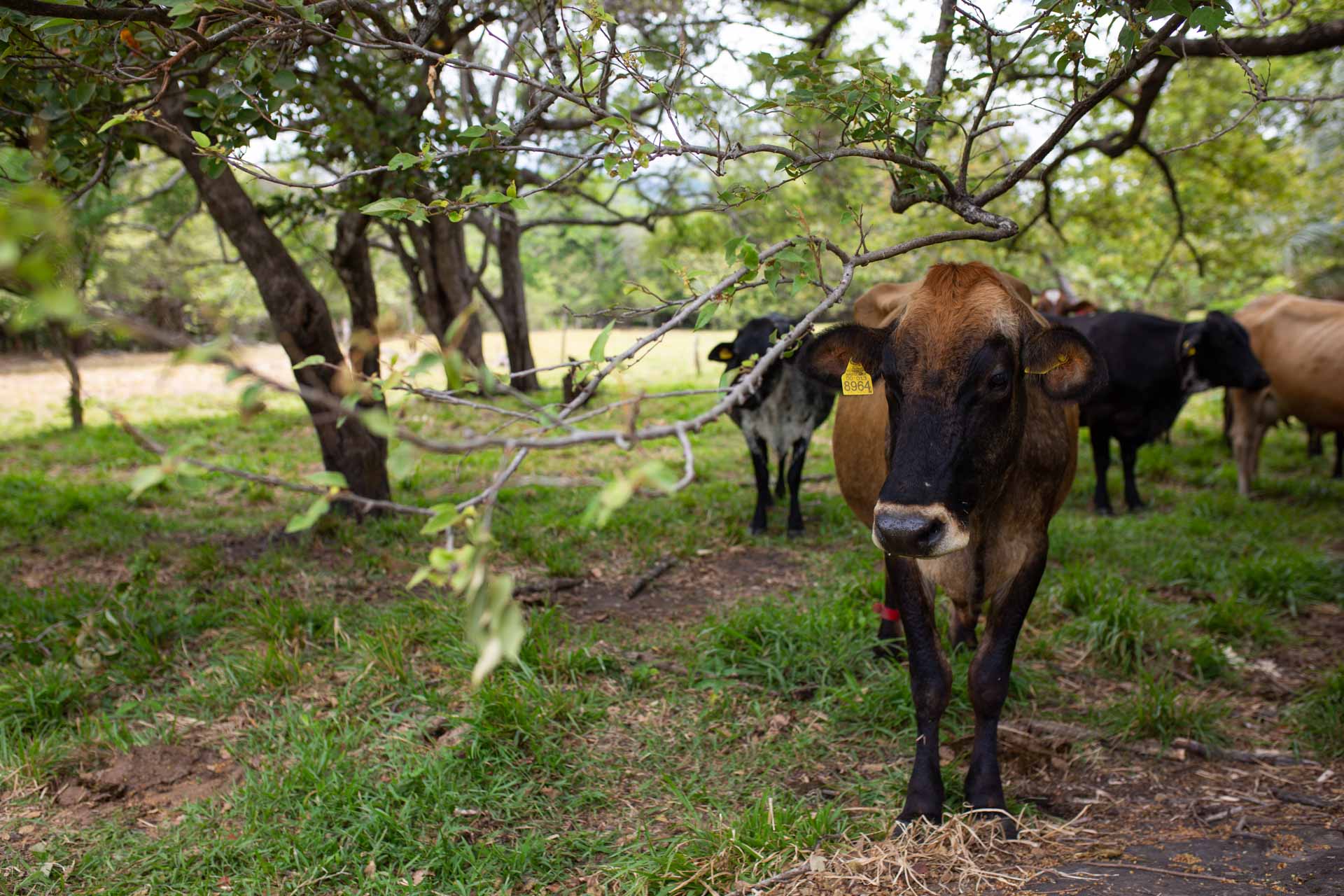
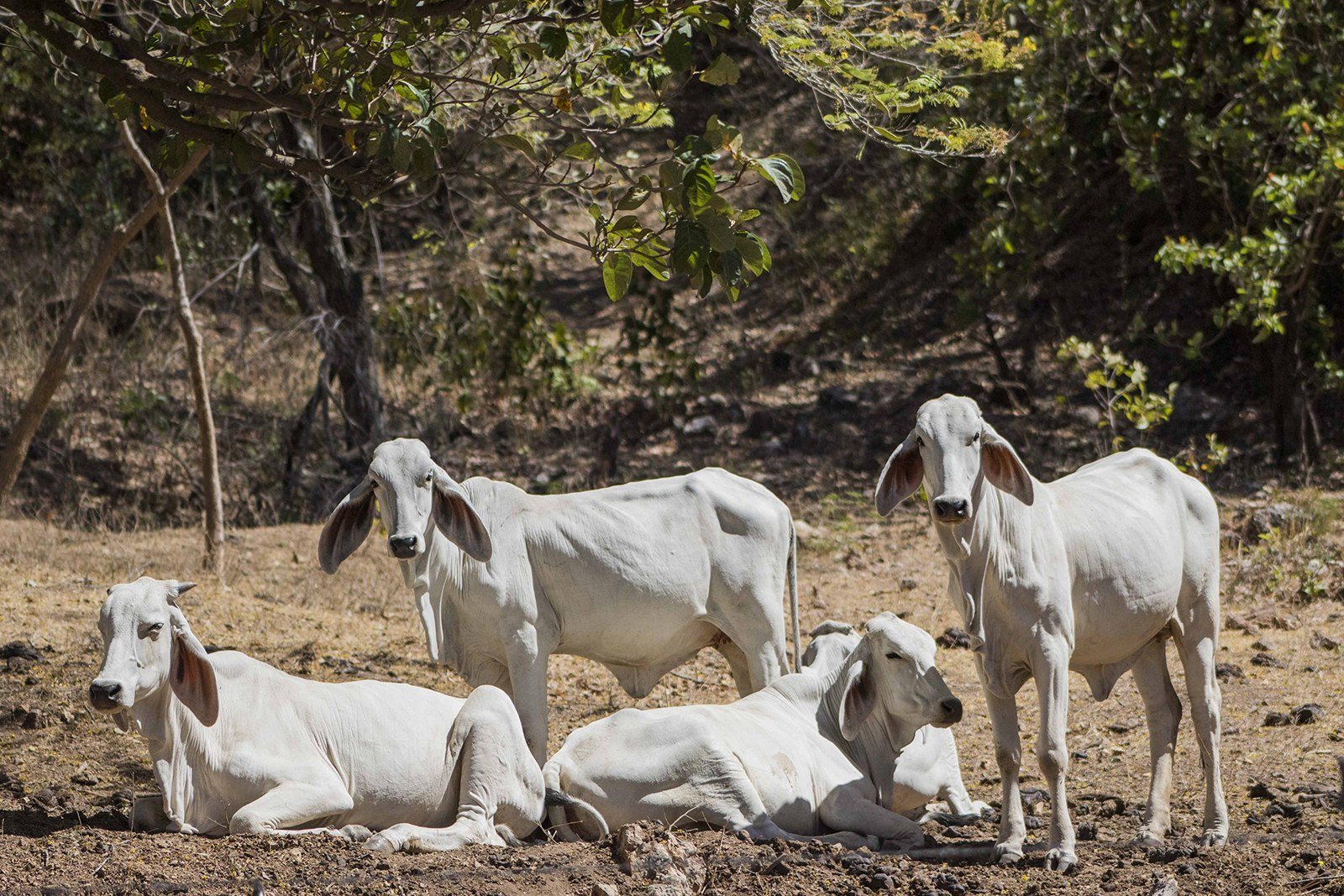
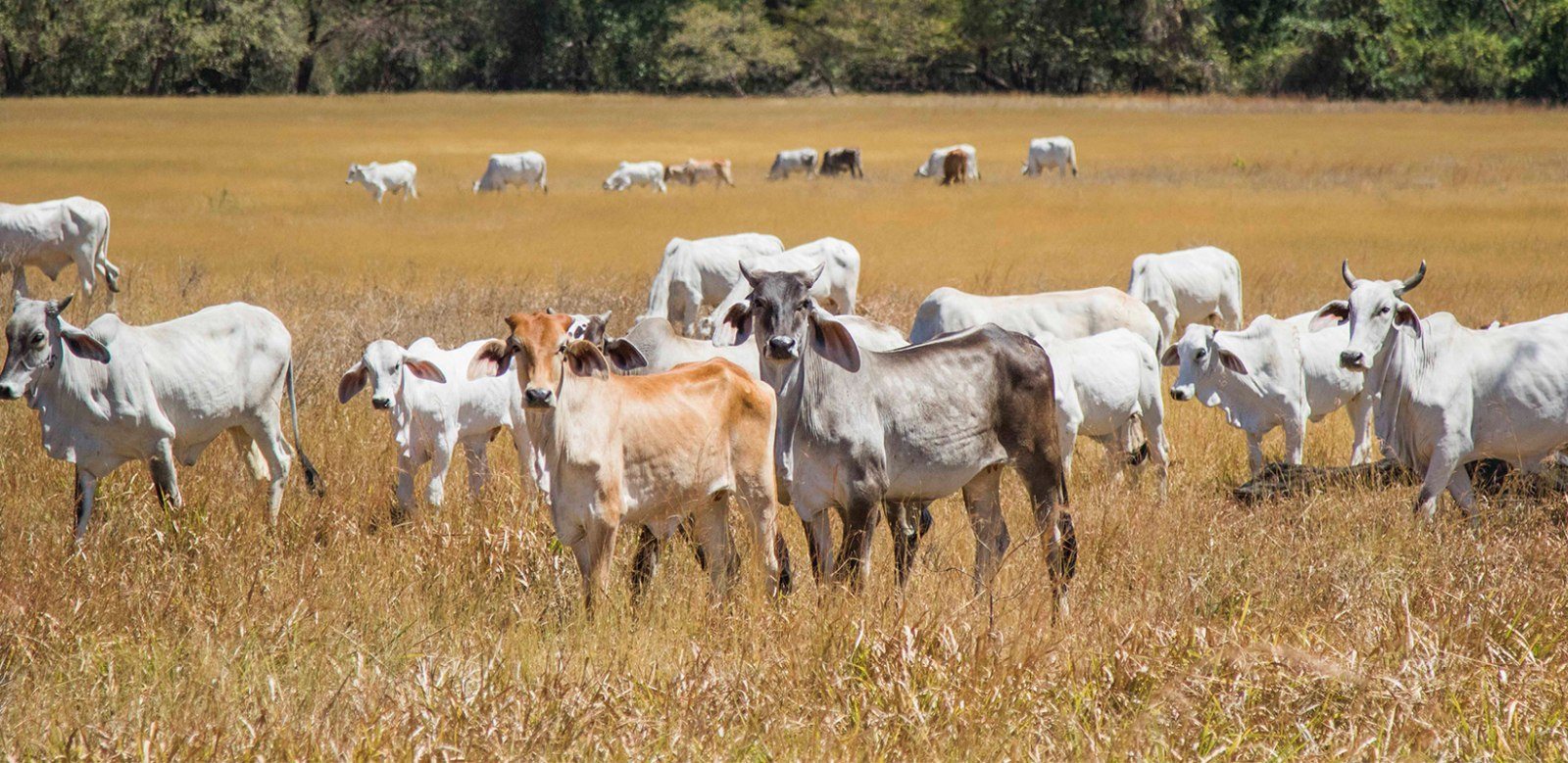
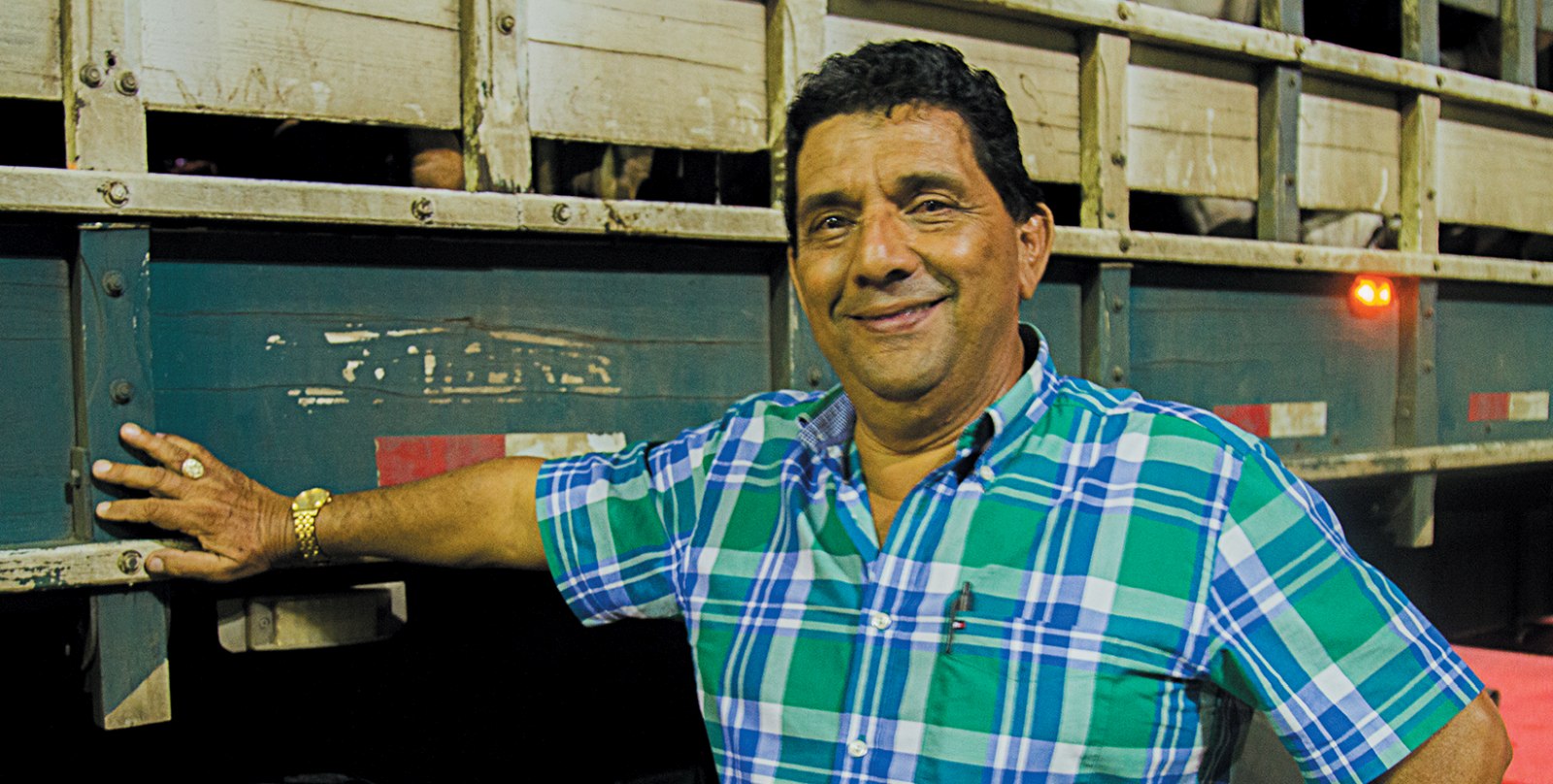

Comments